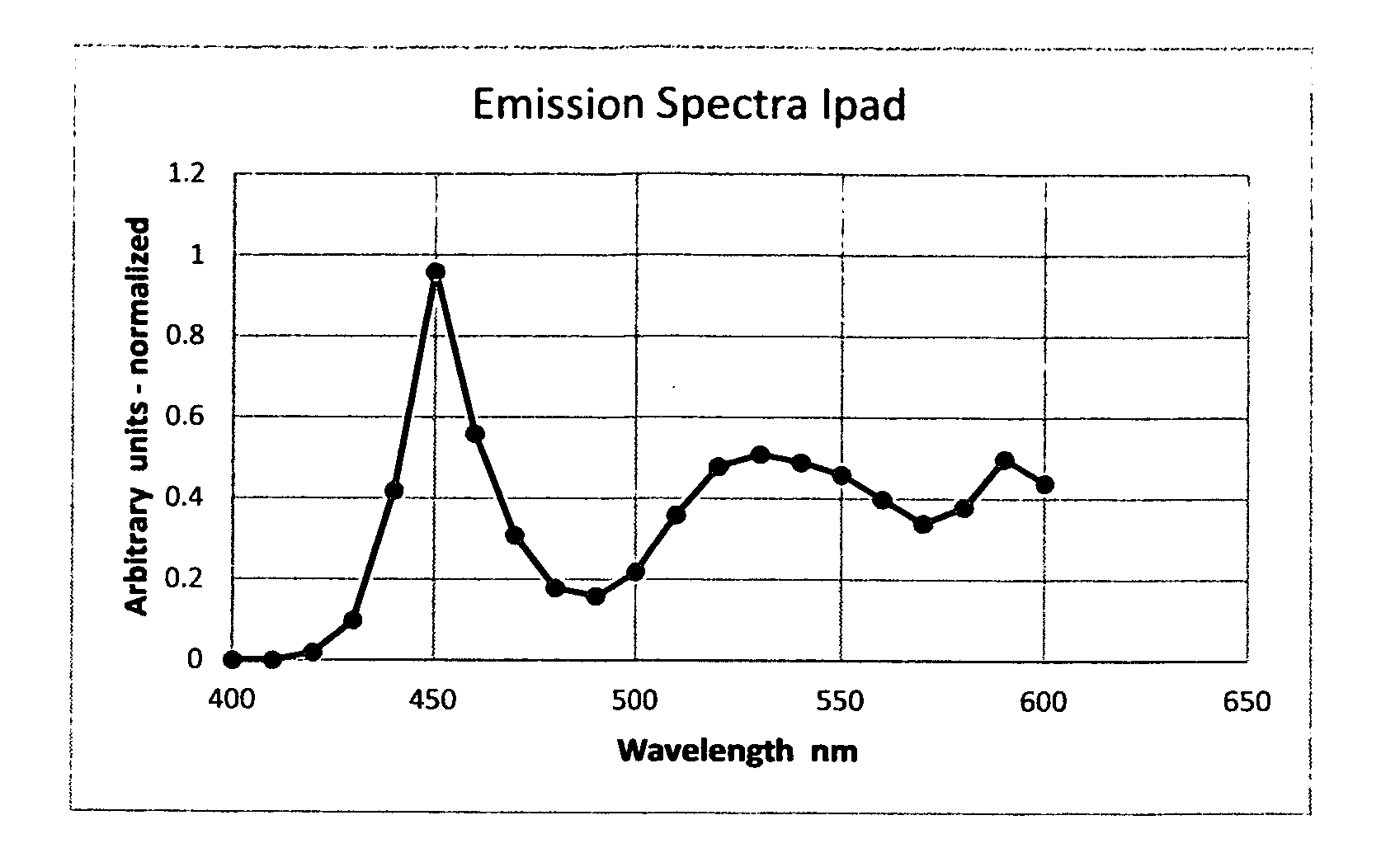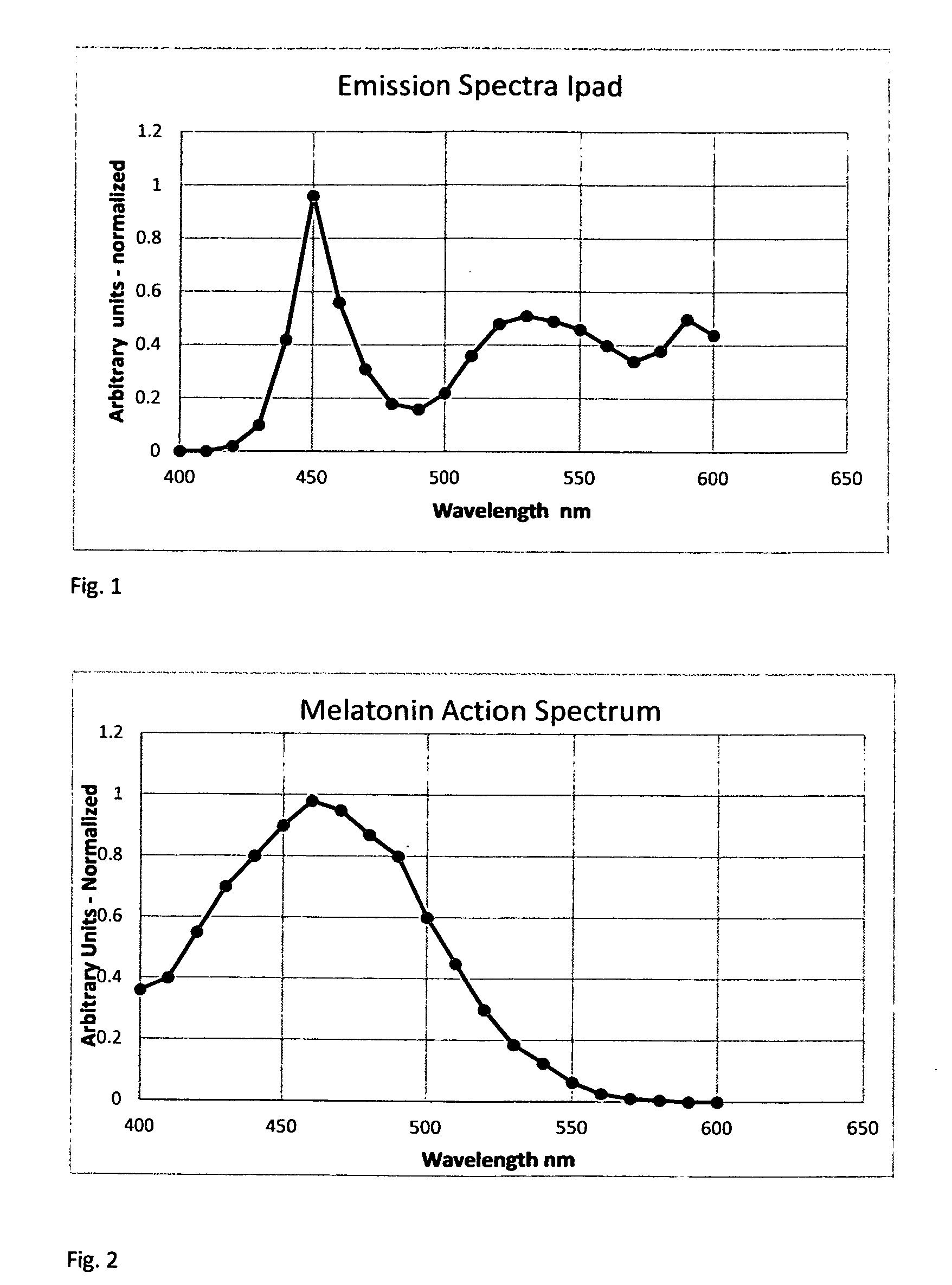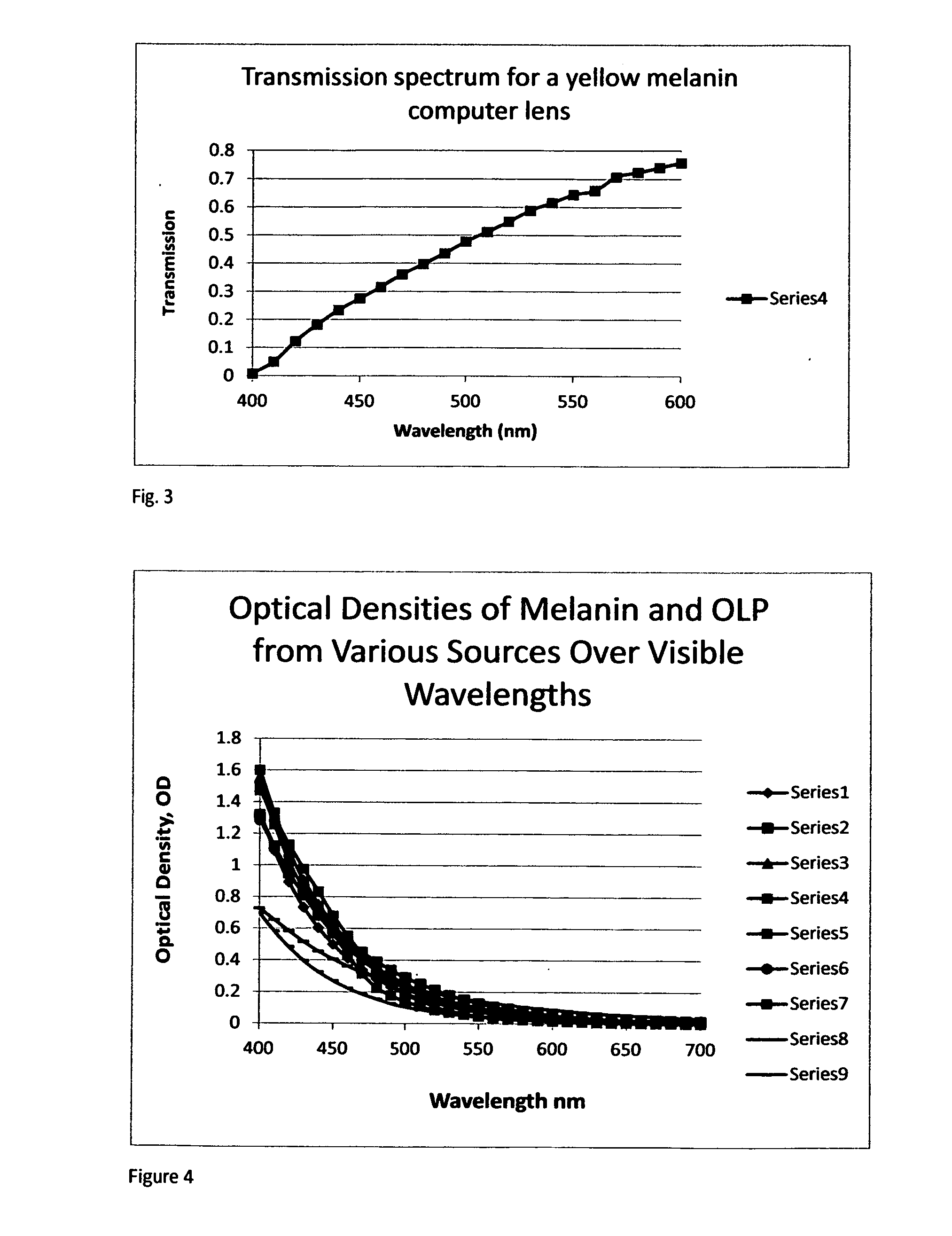Light filters that minimize suppression of melatonin and loss of color perception
a filter and light technology, applied in the field of light filters, can solve the problems of loss of color perception, greatly compromised color perception, and loss of color perception for someone viewing colors through such a filter
- Summary
- Abstract
- Description
- Claims
- Application Information
AI Technical Summary
Benefits of technology
Problems solved by technology
Method used
Image
Examples
example 1
An Excel Spreadsheet Showing a Calculation of the MPF
[0035]In this example, Applicants created an Excel spreadsheet that uses equations 1 and 2 and the data of FIGS. 1, 2, and 3 to determine the rating, MPF. Column A of the spreadsheet has the wavelength running from 400 nm in cell A4 to 600 nm in cell A24. In column B, the action spectrum is digitized from the curve of the Action Spectrum, A□ of FIG. 2, It runs from cell B4 to cell B24. In column C, the light source emission spectrum, Sλ is digitized from the curve of the Spectrum of FIG. 1 for the Ipad; it runs from cell C4 to cell C24.
[0036]Column D shows the product SλAλ of Sλ and Aλ. and Cell D25 show the sum of these products. Column E contains the transmission data for the specific light filter (a yellow melanin computer lens) for which the MP value is to be determined. These data are taken directly from the transmission spectrum (FIG. 3) recorded for the light filter by the spectrophotometer.
[0037]Column G shows the product ...
example 2
[0051]Using the methods of bleaching in combination with fractionation applied to a melanin or to an oligomerization product of 3 hydroxy-kynurenine—as described in U.S. Pat. No. 8,133,414 and U.S. Pat. No. 8,048,343—a light yellow brown powder was produced and supplied by Photoprotective Technologies. This powder was used to cast a thin film as follows: 1.33 grams and 10 grams of PET (Polyethylene terephthalate) plastic pellets were added to 100 grams of tetrahydrofuran and stirred for 24 hours. The solution was deposited onto a small glass slip and the solvent was allowed to evaporate under ambient conditions. A thin film was formed with a yellow brown tint. The transmission spectrum of the film was recorded in a spectrophotometer and is displayed in FIG. 6.
example 3
[0052]The transmission data of Example 2 was entered into the Excel spreadsheet for the calculation of the MPF as in Table 2. The MPF value is 6.05—close to the value of 6 preferred in this invention. The logarithm of its optical density is shown in FIG. 7 and the R2 value for the straight line fitted to its data in an Excel routine is 0.997 which is a high value and in accord with the preferred values for R2 of this invention.
PUM
 Login to View More
Login to View More Abstract
Description
Claims
Application Information
 Login to View More
Login to View More - R&D
- Intellectual Property
- Life Sciences
- Materials
- Tech Scout
- Unparalleled Data Quality
- Higher Quality Content
- 60% Fewer Hallucinations
Browse by: Latest US Patents, China's latest patents, Technical Efficacy Thesaurus, Application Domain, Technology Topic, Popular Technical Reports.
© 2025 PatSnap. All rights reserved.Legal|Privacy policy|Modern Slavery Act Transparency Statement|Sitemap|About US| Contact US: help@patsnap.com



